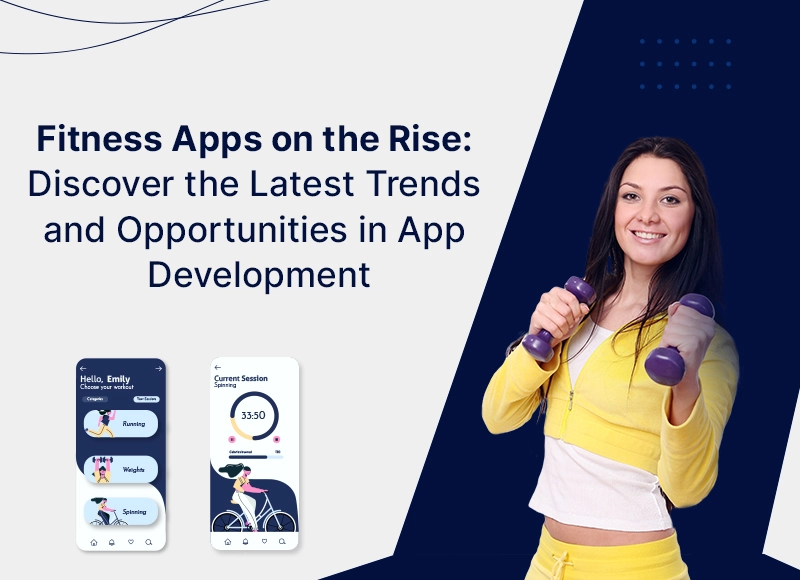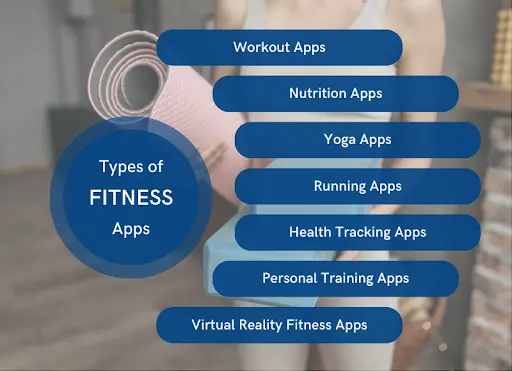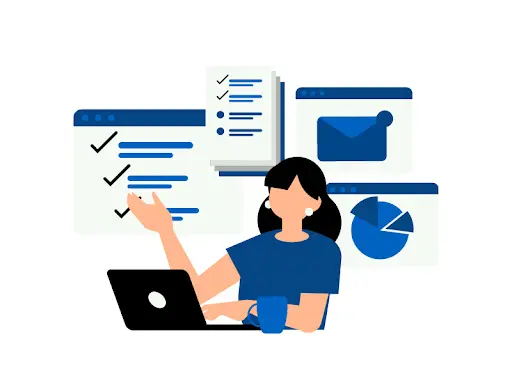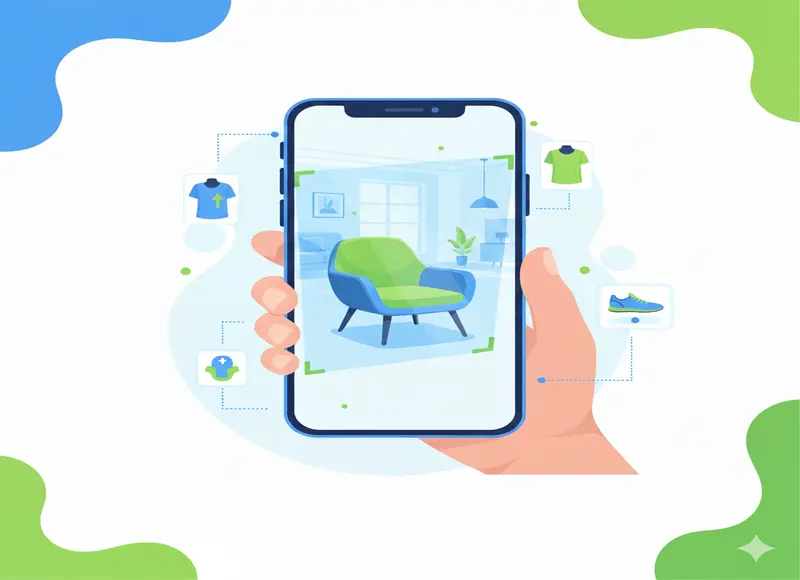Table of Contents
Fitness apps are on the rise, and there's never been a better time to get involved. Learn about the latest trends and opportunities in app development with this comprehensive guide.

Over the past decade, the fitness industry has seen remarkable growth on a global scale, with the development of fitness apps being a major contributor to this trend. According to Research and Markets report, the market size for fitness apps worldwide is projected to reach $4.9 billion by 2027, with a Compound Annual Growth Rate (CAGR) of 18.1% from 2021 to 2027. This growth can attribute to a range of factors, including:
- the rising awareness of the advantages of physical fitness,
- the use of mobile devices
- the availability of high-speed internet.
Types of Fitness Apps

Custom app development is used to cater to a variety of fitness needs. From weight loss and muscle gain to yoga and meditation, there is an app for almost every fitness activity. The availability of these apps has made it easier for people to access fitness programs at their convenience, whether at home, in the office, or on the go.
This convenience has made fitness more accessible and attractive to a broader range of people. Below are some commonly favored categories of fitness app development:
Workout Apps
These apps are designed to help users with workouts and exercises. They provide users with workout routines, videos, and guidance on how to perform different activities.
Top features:
- Exercise Library: A comprehensive library of exercises with step-by-step instructions, images, and videos to guide you through your workout.
- Personalized Workouts: The ability to customize your workout routine based on your fitness level, goals, and preferences.
- Progress Tracking: A feature that tracks your progress over time, including the number of workouts completed, calories burned, and other metrics.
- Challenges and Rewards: A feature that allows you to participate in challenges and earn rewards for completing workouts or achieving fitness milestones.
- Wearable Device Integration: Some workout apps can be synced with wearable devices like smartwatches or fitness trackers to track your progress more accurately.
- Nutrition Tracking: The ability to track your calorie intake and monitor your diet to help you achieve your fitness goals.
Examples:
- Nike Training Club
- Fitbit Coach
- Sworkit
Nutrition Apps
Users track their food intake, calculate their calorie intake, and provide nutritional information about their food.
Top features:
- Food Tracking: A feature that allows you to log the food and drinks you consume throughout the day and track your calorie intake.
- Nutritional Information: A comprehensive nutritional information database for different foods, including calorie count, macronutrient breakdown, and vitamin and mineral content.
- Meal Planning: The ability to plan and organize your meals for the month based on your nutritional goals and dietary restrictions.When combined with food delivery services that offer a wide variety of clean, chef-created meal plans, it becomes much easier to manage not only nutritional intake, but also the process of buying and preparing the necessary items - further boosting progress towards app-tracked targets, while saving time in the evenings as well.
- Barcode Scanner: A feature that allows one to scan the barcode of a product and get its nutritional information.
- Recipe Suggestions: Some apps offer recipe suggestions based on your nutritional goals, dietary restrictions, and food preferences.
- Personalized Recommendations: Some apps offer personalized recommendations based on your body type, fitness level, and health goals.
- Water Tracking: The ability to track your daily water intake and receive reminders to drink more water.
Examples:
- MyFitnessPal
- Lose It!
- Fooducate
Yoga Apps
These apps focus on yoga and meditation. They provide users with instructional videos, guided meditations, and personalized yoga plans.
Top features:
- Yoga Classes: A library of pre-recorded yoga classes with different lengths, styles, and difficulty levels.
- Personalized Practice: The ability to customize your yoga practice based on your skill level, goals, and preferences.
- Pose Library: A comprehensive library of yoga poses with step-by-step instructions, images, and videos to guide you through your practice.
- Guided Meditation: Some yoga apps offer guided meditation sessions to help you reduce stress, improve focus, and relax.
- Music Integration: Many yoga apps offer music integration for calming while practicing yoga.
- Offline Mode: Some yoga apps allow you to download classes and practice without an internet connection.
Examples:
- Yoga Studio
- Daily Yoga
- Headspace
Running Apps
These apps track running and other cardiovascular activities. Users have information on distance covered, pace, calories burned, and other metrics.
Top features:
- GPS Tracking: A feature that allows you to track your distance, pace, and route while running using your smartphone's GPS.
- Personalized Training Plans: The ability to customize your training plan based on your fitness level, goals, and preferences.
- Audio Coaching: Some apps offer audio coaching and cues to guide you through your runs, including pace, distance, and interval training.
- Route Planning: The ability to plan and save running routes, including popular running paths and trails.
- Challenges and Rewards: A feature that allows you to participate in challenges and earn rewards for completing runs or achieving fitness milestones.
- Virtual Racing: Some apps offer virtual races that allow you to compete against other runners worldwide.
Examples:
- Strava
- Runkeeper
- Nike Run Club
Health Tracking Apps
The apps help users track their health, including sleep patterns, heart rate, and other vital signs.
Top features
- Sleep Tracking: It tracks your sleep patterns, including the number of hours slept, sleep quality, and disturbances.
- Nutritional Tracking: This feature allows you to log what you consume throughout the day and track your calorie intake.
- Water Tracking: The ability to track your daily water intake and receive reminders to drink more water.
- Stress Tracking: Some apps offer stress tracking and management tools, including guided meditations, breathing exercises, and mindfulness practices.
- Health Reminders: A feature that allows you to set reminders for medication, doctor's appointments, and other health-related tasks.
Examples:
- Apple Health
- Google Fit
- Fitbit
Personal Training Apps
They provide users with personalized training plans and workouts. The app content is tailored to their individual fitness goals and abilities.
Top features:
- Personalized Training Plans: The ability to customize your training plan based on your fitness level, goals, and preferences, with personalized workout plans designed by certified personal trainers.
- Video Demonstrations: A library of video demonstrations showing proper form and technique for exercises, with tips and cues from expert trainers.
- Progress Tracking: A feature that allows you to track your progress.
- In-App Coaching: Some personal training apps offer in-app coaching and feedback from certified personal trainers, leveraging video coaching software to enable users to ask questions and receive personalized advice.
- Nutrition Guidance: Some personal training apps offer nutrition guidance with meal plans and recipes to help you reach your fitness goals.
Examples
- Aaptiv
- Freeletics
- FitOn
Virtual Reality Fitness Apps
Users can engage in immersive fitness routines from the comfort of their homes through a virtual reality workout.
Top features:
- Immersive Workouts: Virtual reality fitness apps offer immersive workouts that allow you to experience a range of activities in a simulated environment.
- Tracking and Metrics: Allow you to monitor your progress, including calories burned, heart rate, and distance covered.
- Interactive Experience: Provides a sense of presence with virtual trainers and interactive environments.
- Audio and Visual Feedback: Includes audio and visual feedback that helps you maintain proper form and technique during workouts.
- Multiplayer Options: Users can compete or work out with friends.
Examples:
- Supernatural
- BoxVR
- Beat Saber Fitness
Overall, many types of fitness management apps and app development are available. All are designed to cater to different aspects of fitness and wellness.
Building a Fitness App: Key Stages of the Development Process

Developing a fitness app can be a great way to help people reach their body goals. For example, whether they want to lose weight, build muscle, or maintain a healthy lifestyle. Here are some ways to develop a fitness app:
1. Define your target audience
Identify the specific group of people who will use your app and what their fitness goals are. This will help to tailor your app to their needs and make it more effective.
2. Determine the features you want to include
Decide what features you want to include in your app. It could be workout plans, nutrition tracking, progress tracking, social sharing, etc.
3. Define a platform, technology stack & budget
Decide on the technology stack and platform you want to use to develop your app. Consider whether you want to build for iOS or Android, or both. Focus on which programming languages and frameworks you will use.While entrepreneurs often wonder how much does it cost to build a fitness app, the investment typically varies based on features, platform choice, and development complexity.
4. Design the user interface and experience
Create an intuitive and easy-to-use interface with a simple layout and easy navigation. Focus on making the app visually appealing and user-friendly.
5. Integrate with wearable devices
Consider integrating your app with wearable fitness devices. There are smartwatches and fitness trackers which can help users track progress more accurately.
6. Provide personalized recommendations
Utilize machine learning algorithms to generate customized suggestions based on users' fitness goals, preferences, and past behaviors. This can help keep users engaged and motivated.
7. Test and launch the app
Test the app to ensure it is without bugs and performs well. Once you are confident in the app's performance, launch it on the app stores and start marketing it to your target audience.
8. Continuously update and improve the app
Identify the specific group of people who will use your app and what their fitness goals are. This will help to tailor your app to their needs and make it more effective.
Fitness App Development: Trends & Opportunities in 2023

Fitness app development has become popular over the years with the rise of wearable technology as an increasing number of individuals seek to monitor their well-being. There are plenty of opportunities for developers to create innovative and effective fitness apps. Here are some of the current trends and opportunities in fitness app development:
Personalization
This trend reflects a growing demand for customized fitness experiences that cater to individual users' unique needs and preferences. By leveraging data analytics and machine learning, fitness apps can create personalized workouts and meal plans that help users achieve their fitness goals more effectively.
Wearable Integration
With the increasing popularity of wearable technology, fitness apps that integrate with these devices are becoming more prevalent. This trend allows users to track their progress in real-time and provides more accurate data for monitoring their fitness goals. It also encourages users to stay motivated and engaged by making fitness tracking more accessible and convenient.
Gamification
The addition of game-like elements to fitness apps can motivate users to engage in physical activity and stick to their fitness goals. By providing rewards and incentives, gamification can make fitness more fun and engaging, helping users build healthy habits and maintain their fitness routines over time.
Social Sharing
This trend allows users to connect with others and receive support and encouragement from their social networks, creating a sense of community around fitness goals. Users can hold themselves accountable and stay motivated to achieve their fitness goals by sharing their progress.
Virtual Coaching
Artificial intelligence and virtual coaches in fitness apps can provide users with personalized support and advice, helping them stay on track and achieve their fitness goals. This trend enables users to receive real-time feedback and guidance, making fitness more accessible and personalized.
Health Tracking
This tendency indicates an increasing recognition of the significance of overall well-being and health beyond mere physical fitness. By tracking metrics such as sleep, nutrition, and mental health, fitness apps can give users a holistic view of their health and help them make more informed decisions about their fitness and wellness goals.
Overall, the opportunities for fitness app development are vast. Developers have a lot of potentials to create apps that can help users achieve their fitness goals and lead healthier lives.
Conclusion
The rise of fitness app development has transformed the fitness industry. Now, fitness is more accessible and attractive to a broader range of people. The availability of different types of fitness apps has made it easier for users to access personalized fitness programs. As we move into 2023, the fitness app market is expected to grow, presenting numerous developer opportunities. Current trends are expected to shape the future. Fitness app development allows developers to create innovative and compelling apps that can help users achieve their fitness goals and lead healthier lives.
FAQs
The market size for fitness apps worldwide is projected to reach $4.9 billion by 2027, with a CAGR of 18.1% from 2021 to 2027
To improve the application, you can:
- Allow users to sign in with their social media accounts to eliminate the need for them to create a new account for your app.
- Users can share their achievements, workout plans, and other activities on social media platforms.
- Create a community within your app where users can connect with each other, share their progress, and motivate each other.
- Collaborate with fitness influencers or trainers to promote your app and encourage their followers to use it.
- Allow users to create and share content within your app, such as workout routines, recipes, or motivational quotes.
Some examples of how to integrate personalization:
- Fitness apps can offer customized workout plans that adapt to the user's fitness level, goals, and schedule.
- Many fitness apps offer nutrition tracking, which allows users to log their meals and monitor their caloric intake.
- By offering recommendations, fitness apps can help users set and achieve their fitness goals. For example, an app may suggest a target number of daily steps based on the user's activity level and age.
- Some fitness apps offer personalized coaching based on the user's fitness level and goals. This may include video tutorials, feedback on the form, and encouragement to stay on track.
- Fitness apps can integrate with wearable devices to provide data on the user's activity level, heart rate, and other biometric data.







